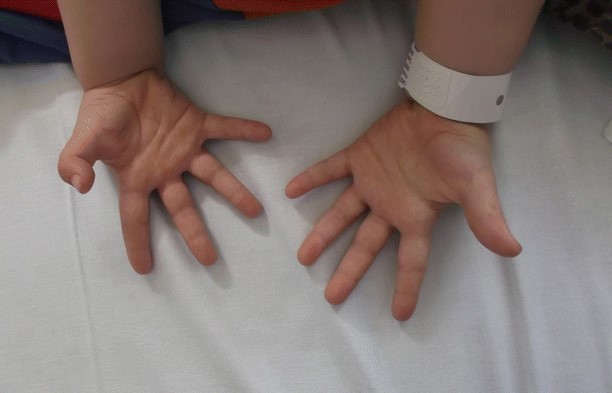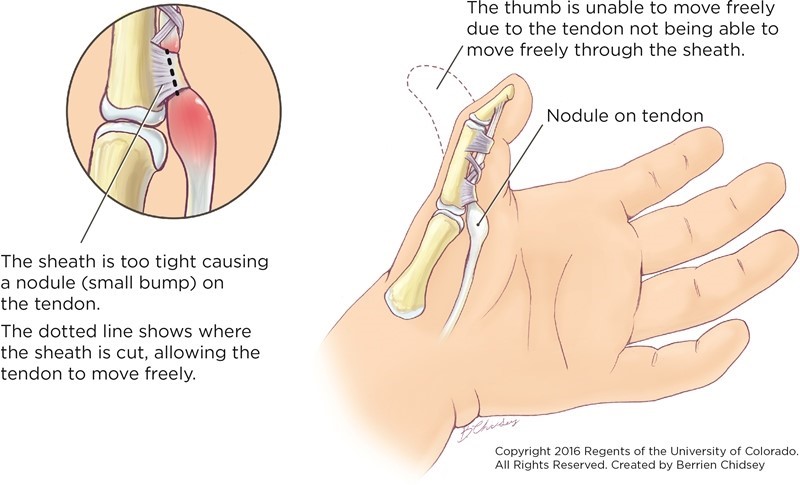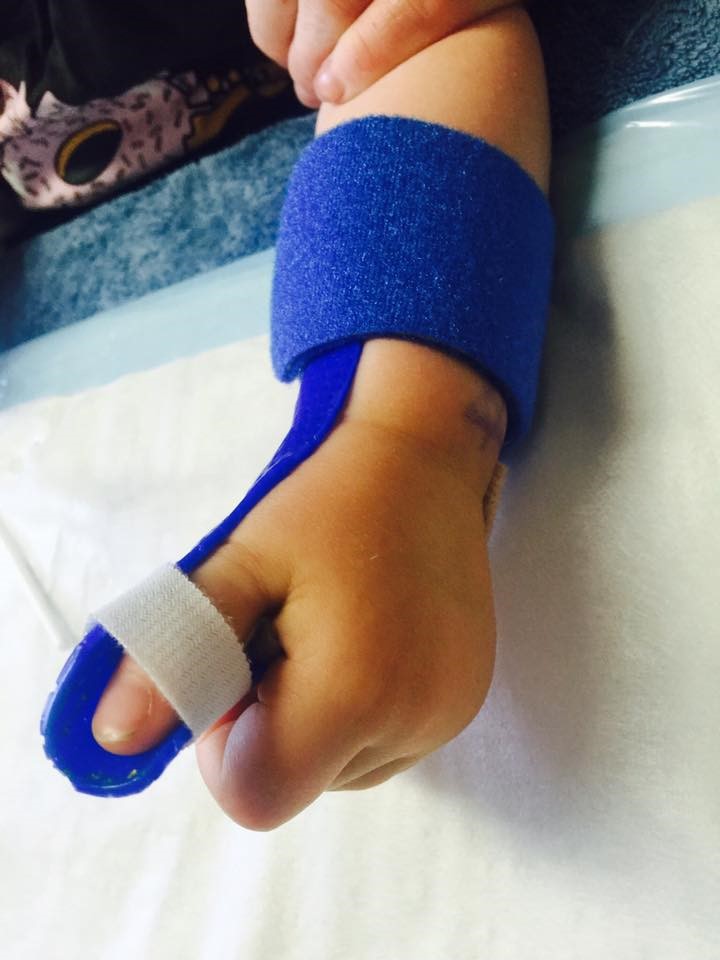Sometimes our littlest of hands get overlooked when thinking about hand conditions. Congenital hand conditions are wide and varied, causing anything from additional or missing digits, to webbed or curved digits, or abnormal growth of bones. A different condition that can occur to our youngest of patients is called a Paediatric Trigger Thumb and affects the ability of a child to straighten their thumb.
In paediatric trigger thumb, the end joint of the thumb (the interphalangeal joint / IPJ) becomes stuck in a bent position. Paediatric trigger thumb can often go unseen as typically infants will tuck their thumb into their palm and clasp around it with their fingers, however trigger thumb occurs when the thumb fails to extend out straight and move around as the child grows and develops.

What causes a paediatric trigger thumb?
The anatomy of a human hand is similar to that of a fishing rod – our bones are like the rod, our tendons are like the fishing line, and we have structures called pulleys that act like the hooks in a fishing rod – the pulleys keep our tendons close to the bone, making them more efficient and preventing bowstringing. A trigger thumb is caused by a thickened flexor pollicis longus (FPL) tendon in the child’s thumb. A thick, palpable nodule forms in the child’s tendon and this nodule becomes stuck in a pulley of the thumb, preventing the thumb from being able to straighten. Although paediatric trigger thumbs are often referred to as congenital trigger thumbs, they are most commonly acquired rather than the child being born with it. The cause of how the trigger thumb becomes acquired is unknown. The prevalence of paediatric trigger thumb is 3 per 1000 children diagnosed by the age of 1 years, and 25% of paediatric trigger thumbs are bilateral. In the early stages, trigger thumbs present as clicking or popping of the thumb when it bends or straightens, and as it worsens can develop into a fixed contracture of the thumb which can’t be straightened.

Treatment
The treatment for paediatric trigger thumb varies depending on when it is first diagnosed. Treatment can include:
-stretching exercises of the thumb and observation if the child is under 2 years old
-intermittent extension splinting to reduce the risk of contracture
-surgical release
Paediatric trigger thumbs can spontaneously resolve up to the age of 2 years old – typically if your child is younger than this then the suggested treatment may be to trial exercises and/or splinting, and to watch and wait. Beyond the age of 2 years old, the trigger thumbs are unlikely to spontaneously resolve and surgical release is generally required. Following surgery, you will likely see a hand therapist for exercises and splinting of the thumb.

Further information
If you suspect that your child may have a trigger thumb, you can contact our clinic on 5221 7171 or make a booking online to see one of our therapists.
Some helpful links that also provide information about paediatric trigger thumbs are:
https://www.schn.health.nsw.gov.au/fact-sheets/trigger-thumb
https://www.chop.edu/conditions-diseases/trigger-finger-and-trigger-thumb
